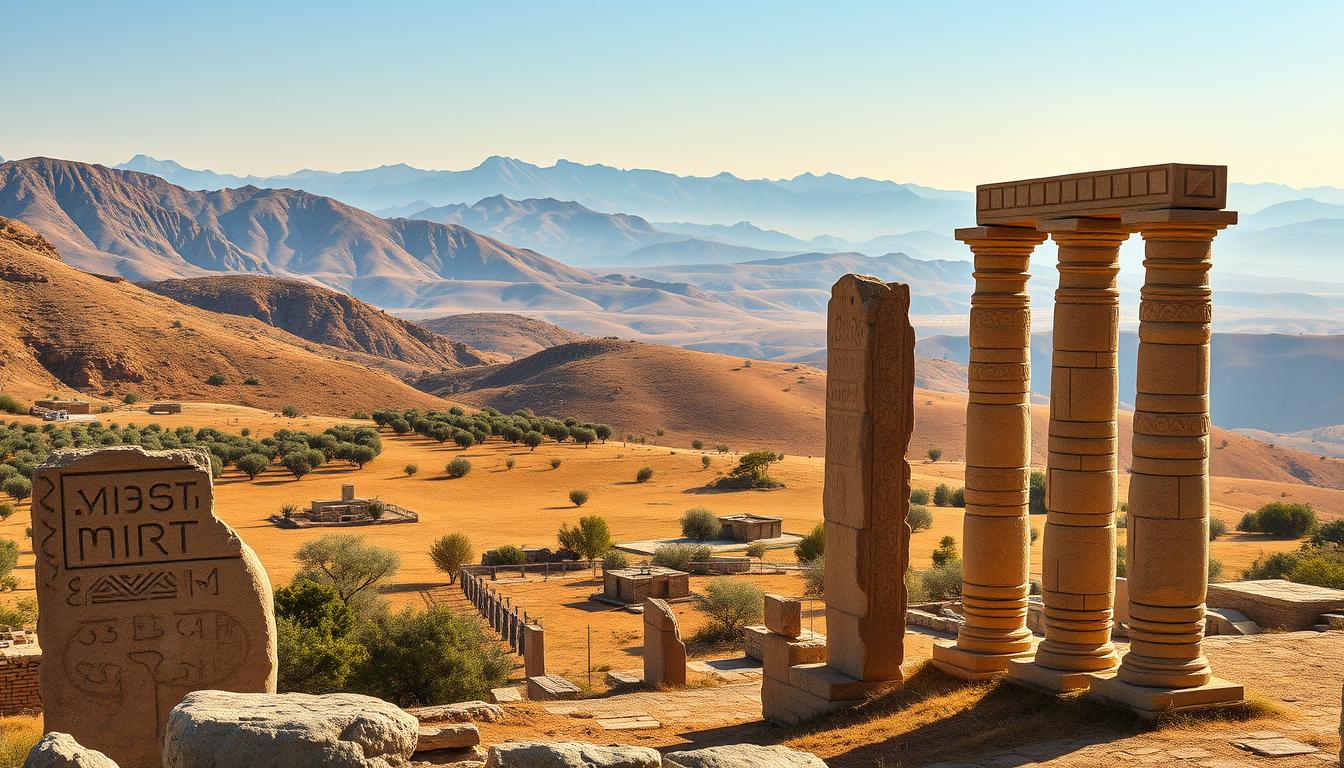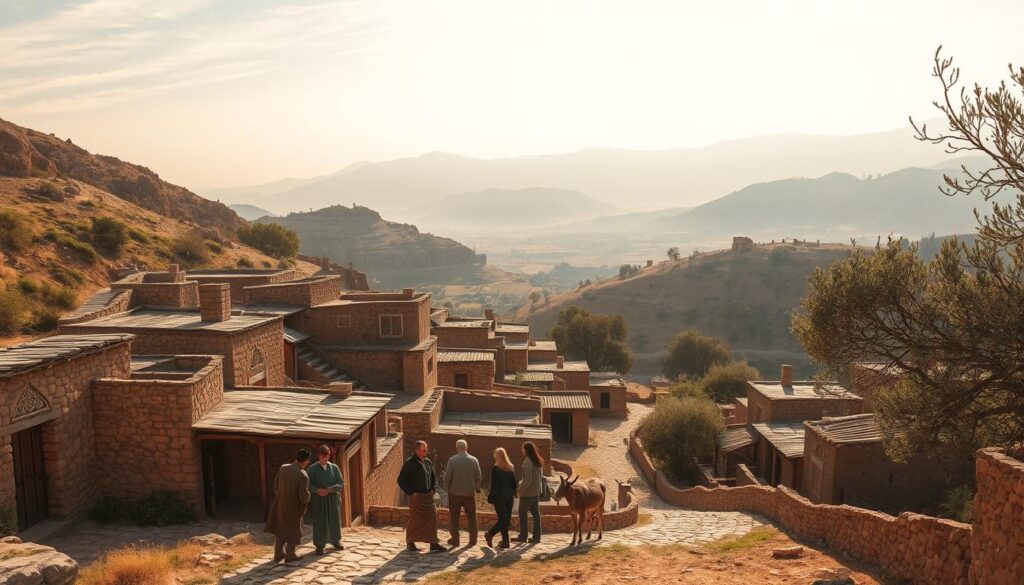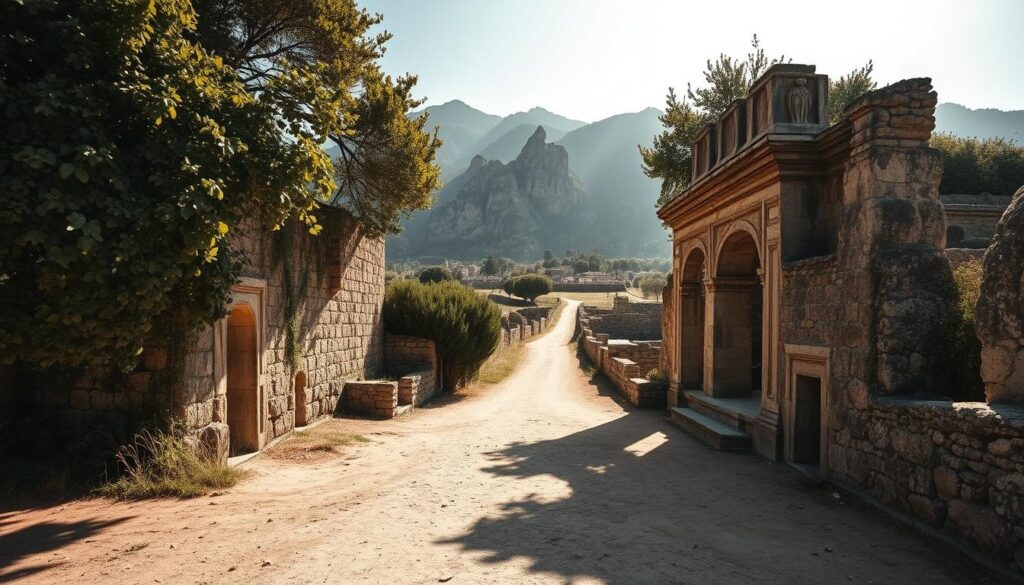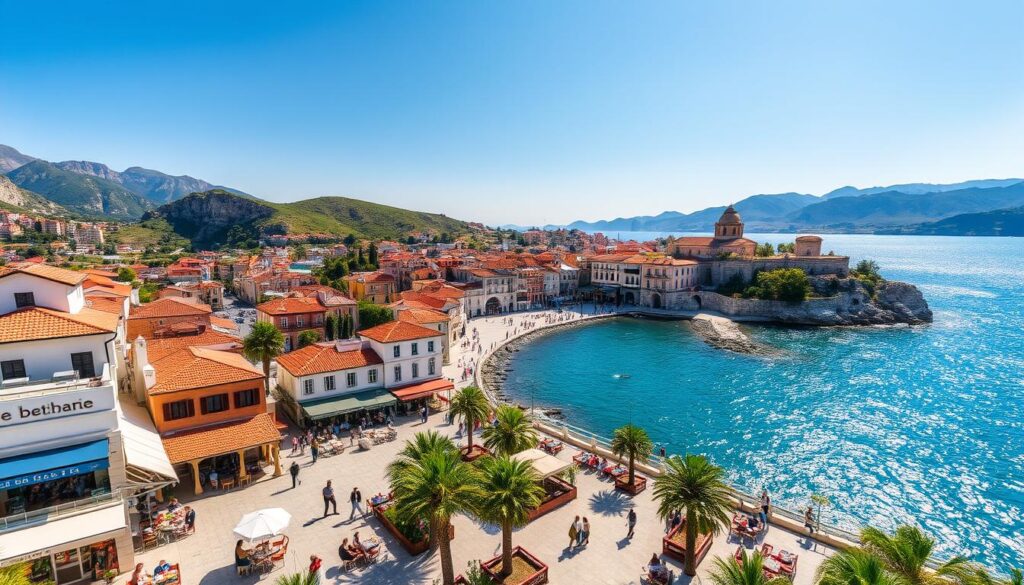Blog
Southeastern Anatolia, Turkey: Göbekli Tepe and Ancient Ruins

Discover the rich history and cultural heritage of Southeastern Anatolia, Turkey, a region that is a must-visit destination for any traveler, especially in 2026.
This fascinating region is home to Göbekli Tepe, one of the world’s oldest known temples, and numerous other ancient ruins that offer a glimpse into the lives of our ancestors.
As you plan your travel itinerary, Southeastern Anatolia should be at the top of your list, offering an unforgettable experience with its unique blend of history, culture, and natural beauty.
Key Takeaways
- Explore Göbekli Tepe, a UNESCO World Heritage Site.
- Visit other ancient ruins in the region.
- Experience the rich cultural heritage of Southeastern Anatolia.
- Plan your trip for 2026 and enjoy the region’s natural beauty.
- Discover the history and significance of the region.
The Archaeological Wonders of Southeastern Anatolia
Turkey’s Southeastern Anatolia region boasts an incredible array of archaeological wonders. This region is not only significant for its historical landmarks but also for its contribution to understanding ancient civilizations.
The Historical Significance of the Region
Southeastern Anatolia is a region steeped in history, with sites like Göbekli Tepe revolutionizing our understanding of ancient cultures. Göbekli Tepe, dated to around 11,000 years ago, is considered one of the oldest temples in the world, predating Stonehenge and the Pyramids of Giza. The region’s historical significance is further underscored by its role in the development of early human societies.
The area has been a crossroads of various civilizations, including the Neolithic, Hellenistic, and Roman cultures, leaving behind a rich tapestry of archaeological sites.
Why 2026 Is the Perfect Time to Visit
Visiting Southeastern Anatolia in 2026 offers a unique opportunity to explore its archaeological wonders without the crowds typically associated with popular tourist destinations. The region is expected to host various cultural events and exhibitions, enhancing the travel experience.
| Event | Date | Location |
|---|---|---|
| Cultural Festival | Spring 2026 | Şanlıurfa |
| Göbekli Tepe Anniversary Celebration | Fall 2026 | Göbekli Tepe |
Travelers can enjoy a more personalized experience, delving into the ancient history of Turkey and exploring the Göbekli Tepe tour with ease.
Understanding Göbekli Tepe: The World’s Oldest Temple
Located in the heart of Southeastern Anatolia, Göbekli Tepe is rewriting the history books as the world’s oldest known temple. This ancient wonder has sparked immense interest among archaeologists and tourists, offering a glimpse into the lives of our ancient ancestors.
The Discovery and Excavation History
Göbekli Tepe was first identified in the 1960s, but it wasn’t until the 1990s that serious excavations began under the leadership of German archaeologist Klaus Schmidt. The site has since revealed a complex history, with findings suggesting that it was used for ritualistic purposes.
The excavation process has been meticulous, with archaeologists uncovering T-shaped pillars adorned with intricate carvings of animals and abstract symbols. These discoveries have been pivotal in understanding the significance of Göbekli Tepe in the context of ancient history Turkey.
The Mystery of Its Purpose and Construction
Despite extensive research, the exact purpose of Göbekli Tepe remains a topic of debate. The site’s construction, dated to around 11,000 years ago, predates the invention of the wheel, making its construction all the more remarkable.
Theories abound, with some suggesting it was a temple or a ritual site, while others propose it could have been an early form of astronomical observatory. The intricate carvings and sculptures found at the site provide clues, but the true purpose remains shrouded in mystery.
Current Archaeological Findings
Recent excavations have continued to shed light on Göbekli Tepe, revealing new insights into its construction and use. The table below summarizes some of the key findings:
| Finding | Description | Significance |
|---|---|---|
| T-shaped Pillars | Large stone pillars shaped like the letter ‘T’ | Symbolic or ritualistic significance |
| Animal Carvings | Intricate carvings of various animals | Possible link to hunting or mythology |
| Astronomical Alignments | Alignments of structures with celestial bodies | Potential use as an astronomical observatory |
For those planning a Göbekli Tepe tour, understanding these findings can enhance the experience, offering a deeper appreciation of this ancient wonder.
Planning Your Travel 2026 Journey to Southeastern Anatolia
As you prepare for your 2026 journey, understanding the best times to visit Southeastern Anatolia is crucial. The region’s climate and historical events play a significant role in determining the ideal travel period.
Best Time to Visit the Region
The best time to visit Southeastern Anatolia is during spring (April-May) and autumn (September-October), when the weather is mild and pleasant. These periods are ideal for exploring historical sites like Göbekli Tepe without the harsh conditions of summer or winter.
Recommended Duration for Your Trip
For a comprehensive experience, a stay of at least 7-10 days is recommended. This duration allows you to explore not just Göbekli Tepe, but also other significant archaeological sites in the region, such as Mount Nemrut and the ancient city of Harran.
Essential Items to Pack
When traveling to Southeastern Anatolia, it’s essential to pack comfortable walking shoes, sun protection, and layers for varying weather conditions. Don’t forget your camera to capture the breathtaking landscapes and historical monuments.
| Item | Description |
|---|---|
| Comfortable Shoes | Essential for exploring archaeological sites |
| Sun Protection | Hat, sunglasses, and sunscreen for outdoor protection |
| Layered Clothing | For adapting to changing weather conditions |
| Camera | To capture the region’s historical and natural beauty |
Creating Your Southeastern Anatolia Itinerary
To experience the best of Southeastern Anatolia, crafting a detailed itinerary is essential. This region is rich in history and archaeological significance, making it a fascinating destination for travelers.
Sample 7-Day Route
A 7-day itinerary allows you to explore the key attractions without feeling rushed. Here’s a sample route:
| Day | Location | Activity |
|---|---|---|
| 1 | Şanlıurfa | Explore the city’s historical sites |
| 2-3 | Göbekli Tepe | Visit the world’s oldest temple |
| 4 | Harran | Discover the ancient city |
| 5 | Zeugma | Visit the Zeugma Mosaic Museum |
| 6-7 | Mount Nemrut | Witness the colossal statues at sunrise |
Combining Göbekli Tepe with Other Sites
Göbekli Tepe is a must-visit, but combining it with other historical sites enriches your travel experience. Consider visiting Harran and Zeugma Mosaic Museum to get a comprehensive understanding of the region’s history.
By carefully planning your itinerary, you can make the most of your Southeastern Anatolia travel experience, ensuring a memorable journey through Turkey’s ancient landscapes.
Getting to Southeastern Anatolia
As you plan your trip to Southeastern Anatolia for 2026, understanding how to get there is your first step towards an unforgettable experience. The region, known for its historical significance and cultural richness, is becoming increasingly accessible to travelers.
International Flights to Turkey
Most travelers to Southeastern Anatolia will first arrive in Turkey through one of its major international airports, such as Istanbul Airport (IST) or Ankara Esenboğa Airport (ESB). From there, you can connect to domestic flights heading to the southeastern regions.
Domestic Transportation Options
Once in Turkey, several domestic transportation options are available to reach Southeastern Anatolia. Here’s a brief overview:
| Mode of Transport | Duration | Frequency |
|---|---|---|
| Domestic Flights to Şanlıurfa GAP Airport | Approximately 2 hours | Daily |
| Bus Services | Varies (around 12-15 hours from Istanbul) | Frequent |
| Private Transfers and Taxis | Depends on traffic and route | On-demand |
Navigating Within the Region
Upon arrival, navigating within Southeastern Anatolia can be achieved through local transportation services, including buses and taxis. Renting a car is also a viable option for those who prefer to explore at their own pace.
Accommodation Options in Southeastern Anatolia
When planning your trip to Southeastern Anatolia, choosing the right accommodation is crucial for a comfortable journey. The region offers a variety of options to suit different preferences and budgets, ensuring that travelers can find the perfect place to stay.
Staying in Şanlıurfa
Şanlıurfa, a city rich in history and culture, provides a range of accommodations from budget-friendly guesthouses to luxury hotels. Staying in Şanlıurfa allows visitors to explore the city’s significant landmarks, such as the Pool of Abraham and the citadel, while enjoying local hospitality. Many hotels offer traditional Turkish cuisine, enhancing the cultural experience.
Hotels Near Göbekli Tepe
For those visiting Göbekli Tepe, staying in nearby hotels can be convenient. Although Göbekli Tepe is in a rural area, there are hotels and lodges within a reasonable distance that offer comfortable accommodations. Some hotels provide shuttle services or guided tours to Göbekli Tepe, making it easier for travelers to explore this ancient wonder. Booking in advance is recommended, especially during peak travel seasons.
Alternative Lodging Experiences
For a more authentic experience, travelers can consider alternative lodging options such as traditional han or boutique hotels that reflect local architecture and culture. Some areas also offer eco-lodges or agritourism experiences, allowing visitors to connect with nature and local communities. These unique accommodations can add a memorable dimension to a Göbekli Tepe tour or Southeastern Anatolia travel itinerary.

Visiting Göbekli Tepe: A Step-by-Step Guide
As you plan your journey to Southeastern Anatolia, understanding how to visit Göbekli Tepe can enhance your overall travel experience. Göbekli Tepe is a complex archaeological site, and being prepared will allow you to make the most of your visit.
Obtaining Tickets and Entry Information
To visit Göbekli Tepe, you’ll first need to obtain tickets. It’s recommended to purchase them online in advance to avoid waiting in line. The official website for Göbekli Tepe tickets provides up-to-date information on pricing and availability. Here are some key points to consider:
- Ticket prices may vary depending on the season and visitor category.
- Guided tours often include ticket prices, so it’s worth considering these packages.
- Some visitors may be eligible for free or discounted entry, so check the official guidelines.
Navigating the Archaeological Site
Göbekli Tepe is a large site, and navigating it efficiently can enhance your experience. Upon arrival, you’ll receive a map that highlights the main areas of interest. Consider the following tips:
- Start early to avoid the heat and crowds.
- Wear comfortable shoes suitable for walking.
- Bring water and sun protection.
Photography Tips and Restrictions
Photography is a great way to capture the essence of Göbekli Tepe. While personal photography is generally allowed, there may be restrictions on commercial photography or the use of drones. Be sure to:
- Check for any specific photography rules before your visit.
- Be respectful of other visitors and the site itself.
Guided Tour vs. Self-Exploration
Visitors to Göbekli Tepe can choose between guided tours and self-exploration. Both options have their advantages:
- Guided tours offer in-depth information about the site’s history and significance.
- Self-exploration allows for a more flexible pace and personal interpretation.
Recommended Local Guides
For those opting for a guided tour, selecting a knowledgeable local guide can greatly enhance your experience. Look for guides who are certified and have positive reviews. Some recommended guides specialize in archaeological tours and can provide insights into Göbekli Tepe’s mysterious past.
Other Must-Visit Ancient Ruins in Southeastern Anatolia
Beyond Göbekli Tepe, Southeastern Anatolia is home to numerous ancient ruins that offer a glimpse into the region’s rich history. The area is a treasure trove of archaeological sites, each with its own unique story to tell.

Mount Nemrut and Its Colossal Statues
Mount Nemrut is a significant historical site, known for its colossal statues and stunning views. The site is a testament to the region’s rich cultural heritage, featuring statues of ancient gods and kings. Visitors can explore the remains of the tomb and enjoy the breathtaking views from the summit.
The Ancient City of Harran
The ancient city of Harran is another must-visit site, famous for its traditional beehive houses and historical significance. The city has a rich history dating back to the Roman era, with remnants of ancient walls, castles, and mosques. Visitors can experience the unique architecture and learn about the city’s cultural importance.
Zeugma Mosaic Museum
The Zeugma Mosaic Museum is home to an impressive collection of Roman mosaics, showcasing the artistic skill of the ancient civilization. The museum features a vast array of mosaics, including depictions of mythological scenes and everyday life. It’s a must-visit for anyone interested in ancient art and history.
Dara Ancient City
Dara Ancient City is a lesser-known but equally fascinating site, featuring ancient infrastructure and historical significance. The city was an important stronghold during the Roman and Byzantine eras, with remnants of walls, cisterns, and churches still visible today. Visitors can explore the site and enjoy the scenic views of the surrounding landscape.
In conclusion, Southeastern Anatolia offers a wealth of ancient ruins to explore, each with its own unique history and cultural significance. From the colossal statues of Mount Nemrut to the ancient city of Harran, there’s no shortage of historical sites to discover in this fascinating region.
- Mount Nemrut: Colossal statues and historical significance
- Harran: Traditional beehive houses and ancient architecture
- Zeugma Mosaic Museum: Roman mosaics and ancient art
- Dara Ancient City: Ancient infrastructure and historical significance
Experiencing Local Culture and Cuisine
As you explore Southeastern Anatolia, you’ll discover a rich tapestry of local culture and cuisine that reflects the region’s history. The region is known for its warm hospitality, where visitors are often greeted with traditional tea and local delicacies.
Traditional Foods of Southeastern Anatolia
The cuisine in Southeastern Anatolia is a blend of Turkish, Kurdish, and Arabic flavors, offering a unique gastronomic experience. Some must-try dishes include lahmacun (Turkish pizza), çiğ köfte (raw meatball), and various kebabs. Don’t forget to try baklava for dessert, a sweet pastry that is a staple in the region.
Cultural Etiquette and Customs
Understanding local customs is crucial when visiting Southeastern Anatolia. For instance, when entering a home or a mosque, it’s customary to remove your shoes as a sign of respect. Dressing modestly is also advised, particularly when visiting religious sites. As a visitor, you’re encouraged to participate in local traditions, such as trying traditional dances or attending a local festival if you’re visiting during a celebration.
“The world is a book, and those who do not travel read only one page.” – Saint Augustine
Shopping for Authentic Souvenirs
Southeastern Anatolia offers a variety of authentic souvenirs that reflect the region’s rich cultural heritage. You can find beautifully crafted handicrafts, including textiles, pottery, and jewelry. Local markets, or çarşı, are ideal places to shop for souvenirs, where you can haggle prices and interact with local vendors. Remember to look for products that are unique to the region, such as Urfa pepper or handmade kilim rugs.
Conclusion: Embracing the Ancient World in Your 2026 Journey
As you plan your Travel 2026 itinerary, Southeastern Anatolia, Turkey, is a destination that promises an unforgettable experience. At the heart of this region lies Göbekli Tepe, a site that has revolutionized our understanding of ancient civilizations. A Göbekli Tepe tour is not just a visit to an archaeological site; it’s a journey through the dawn of human history.
The region’s rich cultural heritage, coupled with its breathtaking landscapes, makes it an ideal location for travelers seeking a unique experience. From the ancient city of Harran to the colossal statues of Mount Nemrut, Southeastern Anatolia is a treasure trove of history and culture waiting to be explored.
As you embark on your journey, remember to immerse yourself in the local culture, try traditional foods, and shop for authentic souvenirs. With its warm hospitality and rich history, Southeastern Anatolia is sure to leave a lasting impression on your heart. Start planning your trip today and get ready to embrace the ancient world.


